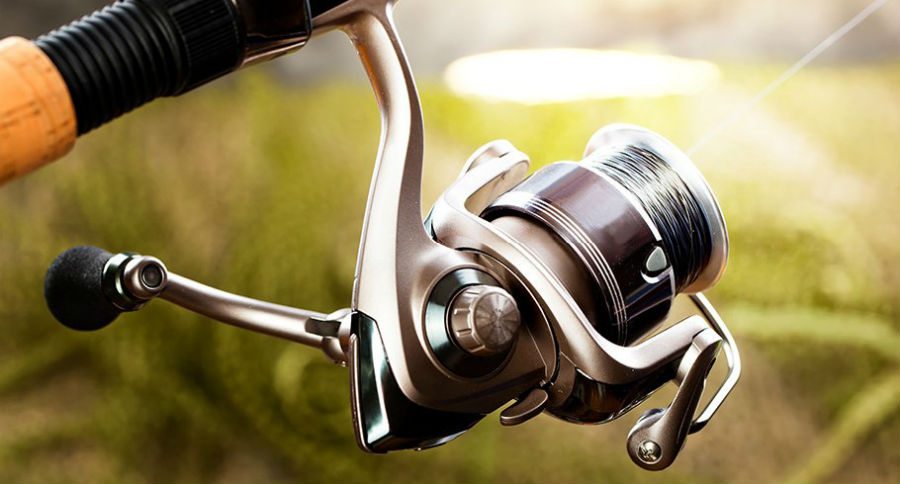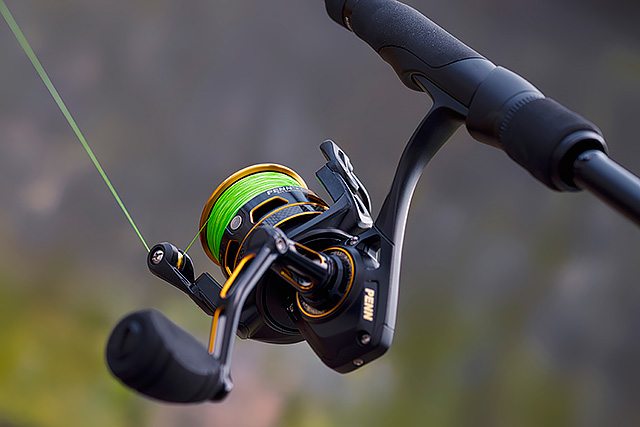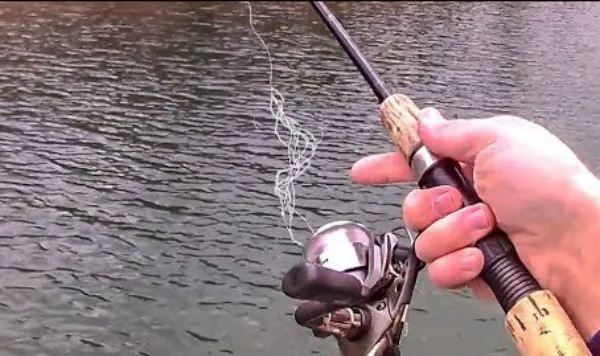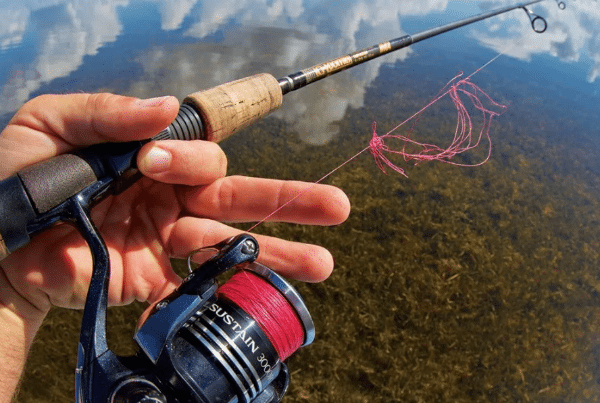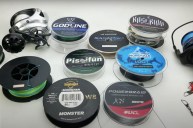Line twist is the irritating scourge of every angler, as it can impede your spin casting and waste valuable fishing time. Here's how to deal with it.
When you're fishing with spinning gear, line twist is an inevitable, irksome aspect of the game. It will eventually happen no matter what you do, but there are a number of factors you can control to make line twist much easier to deal with.
Line twist can affect the distance and accuracy of your casting and how your lures behave in the water. It can cut down on your fishing time and fun, as it forces you to stop fishing and address the issue. And if it's dramatic enough, it can even cause you to lose fish you've hooked.
Fortunately, there are a few simple things you can do to make line twist a less-frequent and less-irritating occurrence. There are a number of tips or tricks to "preventing" line twist, such as using properly sized swivels. But for our purposes, we're going to focus on four things you can easily do when spooling line onto your reel and when you're on the water fishing.
Spooling line onto your spinning reel
There are a number of things to consider when spooling line onto a spinning reel. Assuming you're following the recommended guidelines for line weight and that your reel is properly calibrated, let's look at two important aspects.
When spooling line onto your spinning reel, it's vital you spool it in the right direction, meaning you put it on in the same direction it comes off.
If you're reeling line onto the reel in the opposite direction of how it comes off the spool, you're effectively adding line twist with every turn of the handle. To avoid this, place the spool of line on the floor with one of the side facing up. Hold your spinning reel directly above, facing the spool. Turn the handle. Does the bail and spool turn clockwise or counterclockwise?
If the bail turns clockwise, make sure the fishing line coming off the spool and onto the floor is also coming off in a clockwise direction. If the reel is turning counterclockwise, make sure the line coming off the spool is coming off in a counterclockwise direction. Flip the spool on the floor if the directions don't match up.
Now, with the reel attached to your fishing rod, run the line through the guide closest to the reel and tie the end to your spinning reel's spool. Then, pinch the line tightly between a clean cloth ahead of the reel and start reeling the line onto the reel.
You want the line to go on tightly and be as compact as you can make it.
The second part of this process is to use a good line conditioner to spray the line going onto your reel every 50 yards or so. This will help increase the life of your line, and it'll reduce your line's "memory," effectively reducing line twist as you fish.
Give the line on your reel another good spray the night before you plan on hitting the water.
Reducing line twist while fishing
So you've got your reel properly spooled to lessen the potential for line twist. However, you can negate that good work by reeling against the drag and flipping the bail with the reel handle.
The first is a relatively easy habit to cure. Most experienced anglers understand that when a fish runs, you let it run. You never reel against a running fish. Every time you reel when a fish is running, you're adding multiple line twists to your line and accomplishing nothing.
When a fish stops running, you pump and reel, pump and reel, pump and reel. Lift your rod and reel on the way back down. When the fish runs again, you can allow it to run against the drag or even back reel. Just don't reel while the fish is pulling drag.
Secondly, when you cast and your lure hits the water, flip the bail manually. I'll admit, this one took about a whole day or more for me to relearn years ago. I had been in the habit of flipping the bail by simply turning the reel handle. That's not good.
Every time you shut the bail by reeling, you also add twist to the line. The bail grabs the line and the spool continues turning for a short distance before it stops. This short distance between where the bail grabs the line and the spool keeps turning adds a bit of twist to the line.
Over time, this twist will add up until you have kinks and loops in your line.
Stop this from happening by simply shutting the bail with your fingers. This simple action stops both the line and the spool from turning immediately, avoiding that extra twist in the line.
Make it a habit.
The simplest way to remove line twist
Finally, you're going to get line twist eventually. Here's the simple solution to getting rid of it and returning your line to its former kink-free state. A boat is required for this particular task.
Cut your lure free from the end of your line and unspool around 50-75 yards of line into the water as the boat is slowly moving. Drag it behind the boat for a few minutes. This action will unkink and remove the twists from your line.
Then, with your rod tip in the water and your fingers pinching the line ahead of the reel, reel the line back onto the reel tightly. This solves your problem and only takes a few minutes. If you can spray your line again, by all means you should.
If you don't have a boat, you can do essentially the same thing by tying the line to a swivel attached to an immovable object like a tree. Walk backwards, releasing line from your reel for around 50 yards or so. Then, pinching the line in a towel between your fingers, reel as you walk back toward the swivel, keeping the line tight.
Like what you see here? You can read more great articles by David Smith at his Facebook page, Stumpjack Outdoors.
NEXT: USING THE FREEDOM OF INFORMATION ACT TO SUSS OUT A GUY'S SECRET FISHING SPOT
https://rumble.com/embed/u7gve.v3tsgf/
